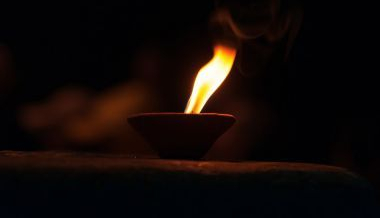
So long as history continues to be considered as a thing of distant past, a subject confined only to the old dusty books in crumbling libraries, people will fail to perceive the claws of history creeping up slowly and silently all around them. If we think of this in retrospect, we find that many events in history which are now considered to be of great significance, even marking the beginning or end of an era, would have gone by unnoticed and unremarked in their own time. The tendency to normalize the intensity of things that are happening before our eyes within our own lifetimes is very much a human trait but this trait seems to peak in us Indians when we do not seem to think twice about huge events leading up to the contraction of our own civilization.
One such incident, which did not seem to worry too many people for too much time, happened recently on July 1, when a suicide blast targeted at a group of Hindu and Sikh leaders who were on their way to meet the Afghan president, killed 19 people and wounded 20 others. The objective of this dastardly attack was not only to eliminate the whole leadership of the Hindu and Sikh communities in Afghanistan, it was also aimed at crushing the last vestiges of hope in these people that despite all the adverse circumstances, they could somehow continue to live a safe life in the lands of their ancestors.
This was not the first such attack on minority communities in Afghanistan. Such attacks have been frequent in the last few decades. During the period of Taliban rule in the country, Hindus and Sikhs in Afghanistan were even forced to wear a yellow badge in public so that they could be identified as non-muslims. Taking responsibility for this recent Jalalabad attack, among whose victims included a senior Sikh leader Avtar Singh Khalsa, who was slated to win the sole seat reserved for minorities in Afghan parliament, the ISIS said in its statement that the attack was targeted at ‘polytheists’. This can only mean that in a region that the Islamic fundamentalists think they lord over, even the token presence of a non-muslim community is abhorrent to them, even if the said community has been existing there for ages.
Amidst these conditions that make their life in Afghanistan unbearable, the Hindu and Sikh refugees have been migrating from that country to India for decades now. These communities combined do not number more than a few thousands in Afghanistan currently and after this attack it would be very difficult for them to continue to stay there. Forced to flee due to intense religious persecution, India, the cultural homeland of these people, ought to open itself to them and give them the opportunity of leading a life of dignity here. But we should not forget, among all this, that the land of Afghanistan, which Mahabharata addresses as ‘Gandhara’, which saw the unique flowering of Greco-buddhist syncretism under the Mauryan empire, to protect which the Kabul Shahi kings erected a great wall around the city of Kabul, from this same land, where the great fire of Indic civilization burnt furiously for many millennia and then was constrained only to the light of a single lamp, with this final wave of refugees coming over to India, this last lamp of Indic civilization goes out too.
It’s indeed a sad commentary on our times that not many people seemed to have realized just how greatly symbolic this act of terror and the resulting movement of refugees would be. Indian government’s response was limited to an act of condemnation and most people must have ignored it as a piece of news just like any other. Petty subversive politics keeps us busy at home and has shrunk our political consciousness to the most mundane. If India is to emerge as a global power someday, it must also retain a civilizational character, and for that to happen Indians need to wake up from their civilizational stupor to take note of our cultural boundaries before they are eroded any further.
